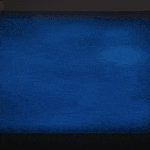







Jim Campbell American, b. 1956
Edition 28 (Surf), 2021
custom electronics, 384 LEDs, treated plexiglass
15 1/2 x 22 3/4 x 2 7/8 in
39.4 x 57.8 x 7.3 cm
39.4 x 57.8 x 7.3 cm
Edition of 28 plus 2 artist's proofs
Further images
-
(View a larger image of thumbnail 1
)

-
(View a larger image of thumbnail 2
)

-
(View a larger image of thumbnail 3
)

-
(View a larger image of thumbnail 4
)

-
(View a larger image of thumbnail 5
)

-
(View a larger image of thumbnail 6
)

-
(View a larger image of thumbnail 7
)

-
(View a larger image of thumbnail 8
)

The MIT-educated, former Silicon Valley engineer Jim Campbell makes artworks that are fundamentally about how we process information and extrapolate from that data to perceive the world around us. Images...
The MIT-educated, former Silicon Valley engineer Jim Campbell makes artworks that are fundamentally about how we process information and extrapolate from that data to perceive the world around us. Images on your computer screen are composed of upwards of two million pixels. In this artwork, Campbell creates an image using only 384 colored LEDs – far, far too low-resolution for you to understand what you’re looking at. But you, with your memory of past experiences and the ability to apply that information to new circumstances, are able to make sense out of the flickering of a handful of pixels, and discern the movements of waves.
In this piece, Campbell returns to ocean imagery – one of his favorite, rhythmic motifs – but composes the image using color instead of movement alone. By adding the element of color, he’s able to make a readable image at the lowest possible resolution, exploring how little information a viewer requires to form a complete idea. And in a masterstroke of technical facility, the frame, imperceptibly slowly, zooms in and out to several “details” of the image during the course of an approximately 45 minute loop. As you “get closer” to the waves, they become more abstract. As you get further away, they become decipherable. For Campbell, this work is a metaphor for our ability to perceive meaning being based not only on the information we receive, but also the perspective from which we view it.
In this piece, Campbell returns to ocean imagery – one of his favorite, rhythmic motifs – but composes the image using color instead of movement alone. By adding the element of color, he’s able to make a readable image at the lowest possible resolution, exploring how little information a viewer requires to form a complete idea. And in a masterstroke of technical facility, the frame, imperceptibly slowly, zooms in and out to several “details” of the image during the course of an approximately 45 minute loop. As you “get closer” to the waves, they become more abstract. As you get further away, they become decipherable. For Campbell, this work is a metaphor for our ability to perceive meaning being based not only on the information we receive, but also the perspective from which we view it.
Your shopping bag
This purchase may be subject to local rates of import, sales and use taxes for which the purchaser is 100% liable.
No items found
Close
Your Favorites
Create a list of works then send us an inquiry.
No items found